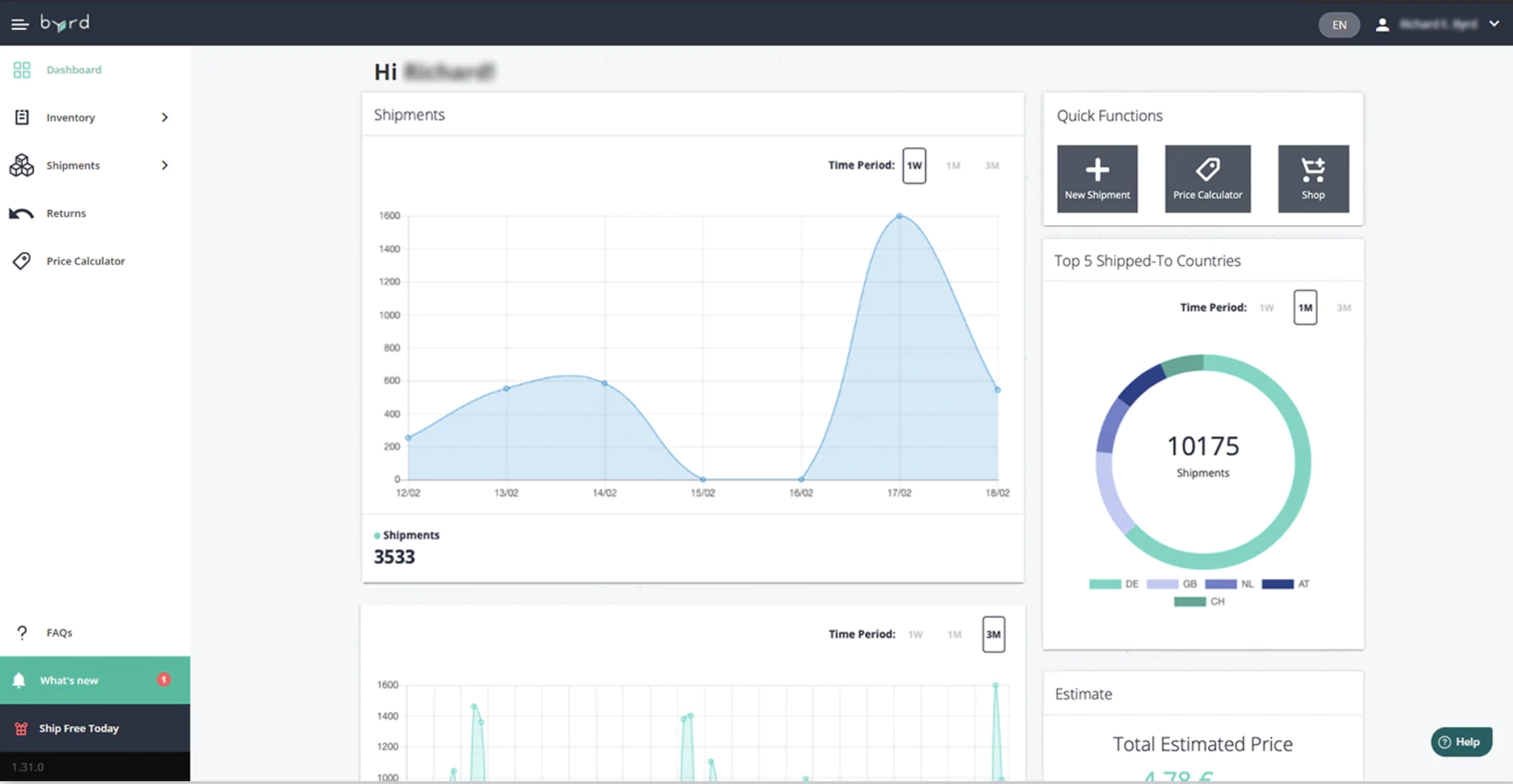Integration Overview
About byrd and this documentation
byrd is an e-commerce logistics partner with a strong international network. With multiple fulfillment warehouses across Europe, we help online shops to achieve their objectives.
This documentation is intended to be used by developers from companies willing to integrate through the byrd API. byrd also offers ready-to-use integrations for the major e-commerce platforms like Amazon FBM, Billbee, ChannelEngine, Mirakl, Plentymarkets, PrestaShop, Shopify, Shopware, WooCommerce and Xentral among others.
We are happy to help you to choose the integration to best suit your business case. Don't hesitate to contact us.
The dashboard
byrd provides a dashboard which is a graphical web interface where users can perform most of the operations described in these guides. As a developer you can also use the dashboard to check the results of the different operations performed with the API.

Integration phases
The integration with byrd can be done in a few days or weeks depending on the flows you choose to implement, and is composed of four consecutive phases:
| 1. | Preparation | You request your credentials and setup the environment (company details, create products and deliveries). |
| 2. | Development | You decide which flows to implement using byrd APIs. |
| 3. | Test | You test your integration and schedule a live test with byrd. |
| 4. | Go live | You receive production access and configure your environment with the help of byrd. |
What can I do with byrd APIs?
byrd APIs give you the control of the whole fulfillment process. You can for example create products, get the stock of them, announce deliveries, create shipments, get the status of your shipments, list returns, etc.
Which endpoints should I implement?While integrating through API, only the shipment creation flow is required but we highly encourage you to implement the tracking information and stock level flows to have a complete synchronisation of your shipments and products between byrd and your system.
Setting up your products
Before you start shipping with byrd you will need to create the products to be fulfilled and to announce deliveries to the corresponding warehouses. These operations can be done manually through the dashboard or through the API. Please follow the guides depending on the method you prefer:
| Through the dashboard | Through the API |
|---|---|
| How to create a product? | Creating products |
| How to announce a delivery? | Announcing Deliveries |
Once the products are received at the warehouse and validated, the stock will be updated and the shipments that you create can be fulfilled.
Creating shipments
The first step in the integration process is to create shipments in byrd to be fulfilled by a warehouse. There are 2 types of shipments B2C and B2B.
A detailed guide can be found at: Creating shipments
Fetching tracking information
Once a shipment is dispatched by the warehouse it contains tracking information with the carrier used to send the shipment, the tracking number and the tracking url. You can get the tracking information by polling byrd API on a periodical basis. We recommend to check for updates once an hour.
A detailed guide can be found at: Getting tracking data
Getting stock levels
The last process is to get stock levels of your products stored at byrd. To get stock levels you have to poll our system for the current stock levels. We recommend to check for updates once an hour.
A detailed guide for this can be found here: Getting stock levels
Listing returns
When returns portal is enabled for your account, your customers can type in their order number and choose to return one or more of the shipment items.
To get a list of the returns and their status you can use this guide: Returns
More resources
Don't hesitate to take a look to our API Reference for more methods and documentation.
Updated 3 months ago
